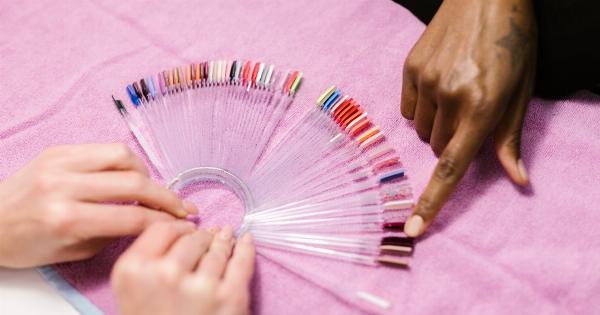Color contact lenses have gained immense popularity in recent years, allowing people to enhance their eye color and transform their appearance.
Whether you want to switch up your look for a special occasion or simply experiment with different eye colors, color contact lenses offer a convenient and temporary solution. Before you dive into the world of colored lenses, it’s important to understand what they are, how they work, and how to choose the right ones for your eyes.
What Are Color Contact Lenses?
Color contact lenses are specialized lenses that change the color of your eyes. Unlike regular contact lenses that correct your vision, color contacts are purely cosmetic.
They come in a wide range of colors, including natural shades like blue, green, and brown, as well as vibrant and unconventional hues like purple, gray, and even red.
How Do Color Contact Lenses Work?
Color contact lenses work by covering the iris, which is the colored part of your eye. The iris is composed of various pigments that determine your natural eye color.
When you wear color contacts, the lens pigment overlaps with your natural iris color, resulting in a new shade.
It’s important to note that color contacts come in two types: opaque and enhancer tints. Opaque color lenses are designed to completely change the color of your eyes, regardless of your natural eye color.
Enhancer tints, on the other hand, are designed to enhance your existing eye color. They have a translucent tint that adds depth and intensity to your natural shade.
Types of Color Contact Lenses
There are several types of color contact lenses available in the market today. Understanding the differences between these types will help you make an informed decision when purchasing.
1. Daily Wear Color Lenses
Daily wear color lenses are disposable lenses that are meant to be worn for a single day. They offer convenience and hygiene as they don’t require cleaning or storage. You simply wear them for the day and discard them before going to bed.
2. Extended Wear Color Lenses
Extended wear color lenses are designed to be worn continuously for an extended period, typically for up to a week. They are made with breathable materials that allow oxygen to reach your eyes, keeping them comfortable even during overnight wear.
However, it’s essential to follow the recommended wearing schedule and consult with your eye care professional before opting for extended wear lenses.
3. Prescription Color Lenses
If you require vision correction, you can opt for prescription color lenses. These lenses combine the functionality of prescription contacts with the aesthetics of color lenses, allowing you to see clearly while still sporting a new eye color.
4. Plano Color Lenses
Plano color lenses, also known as non-prescription color lenses, do not have any corrective power. They are meant solely for cosmetic purposes and are ideal for individuals who do not require vision correction.
Choosing the Right Color Contacts
Selecting the right color contact lenses can be an exciting but overwhelming task. Here are some factors to consider to help you make the best choice:.
1. Skin Tone
Your skin tone plays a crucial role in determining which colored lenses will suit you best. Warm-toned skin pairs well with shades like honey, hazel, or green, while cooler skin tones look great with blue, gray, or violet lenses.
2. Natural Eye Color
Your natural eye color can influence how different lens colors will appear on your eyes. For a subtle change, enhancer tints can enhance your natural shade, whereas opaque lenses can completely transform your eye color.
3. Desired Effect
Consider the effect you want to achieve with your color contacts. If you’re aiming for a dramatic and noticeable change, vibrant or unconventional hues will be the way to go.
On the other hand, if you prefer a more subtle and natural look, opt for colors closer to your natural eye shade.
4. Comfort and Fit
Comfort should never be compromised when wearing contact lenses. Ensure that you choose lenses that fit properly and don’t cause dryness, irritation, or discomfort. Consult with an eye care professional to find the right fit for your eyes.
Caring for Color Contact Lenses
Proper care and maintenance of your color contact lenses are vital for ensuring their longevity and keeping your eyes healthy. Here are some essential care tips:.
1. Cleanliness
Always wash your hands thoroughly with soap and water before handling your color lenses. This will prevent any dirt, oils, or bacteria from transferring to the lenses, reducing the risk of eye infections.
2. Cleaning and Disinfecting Solution
Use a recommended cleaning and disinfecting solution to clean your color lenses. Rub the lenses gently with the solution to remove any debris or build-up.
3. Storage
When you’re not wearing your color lenses, store them in a clean lens case filled with fresh solution. Avoid using water or saliva as a substitute for lens solution, as this can harbor harmful bacteria.
4. Avoiding Makeup Contamination
Put on your color lenses before applying makeup to prevent any cosmetic products from coming into contact with your lenses. This reduces the risk of contamination and eye irritation.
Safety Precautions
While color contact lenses are generally safe, it’s essential to follow a few safety precautions to protect your eyes:.
1. Regular Eye Exams
Regular eye exams are crucial, even if you don’t require vision correction. Eye exams allow your eye care professional to monitor the health of your eyes and ensure that your lenses fit properly.
2. Avoid Sharing Lenses
Never share your color contact lenses with others. Sharing lenses can lead to the transfer of bacteria, increasing the risk of eye infections.
3. Follow Wearing Instructions
Always follow the wearing instructions provided by the manufacturer or your eye care professional. This includes wearing the lenses for the recommended duration and properly cleaning and storing them.
4. Do Not Sleep in Lenses
Avoid sleeping in your color contact lenses, especially if they are not explicitly designed for extended wear. Sleeping in lenses can restrict oxygen flow to the eyes and increase the risk of complications.
By following these safety precautions, you can enjoy the benefits of color contact lenses while ensuring the health and safety of your eyes.































